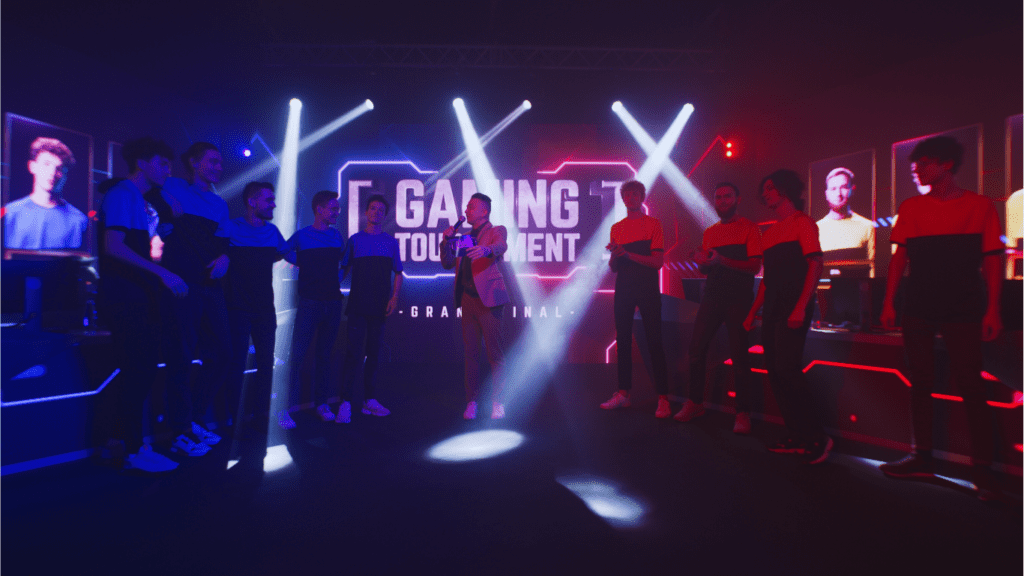Esports has exploded into a global phenomenon, blending competition, technology, and entertainment like never before. As someone who’s followed its rapid growth, I’ve noticed how the format of events has evolved just as quickly. From massive in-person arenas packed with roaring fans to immersive virtual tournaments connecting players worldwide, the future of esports events is shaping up to be more dynamic than ever.
Understanding The Evolution Of Esports Events
Esports events have transformed from informal online matches into major productions attracting millions of viewers globally. Early tournaments, often held in local venues, catered to small communities of fans and players. As the gaming audience grew, events moved to larger arenas, featuring expansive stages, live commentary, and an electrifying atmosphere.
The surge of online platforms enabled virtual tournaments to rise. Advanced streaming technologies allowed players to compete from any location, minimizing logistical challenges. For example, platforms like Twitch and YouTube Gaming made real-time engagement central to the viewing experience.
Hybrid formats emerged to marry virtual and physical components. Global championship events often include in-person finals but rely on online qualifiers to accommodate international participants. This integration balances accessibility with the emotional impact of live gatherings, expanding the reach of competitive gaming.
Technological advancements redefine the audience experience. Augmented reality (AR) overlays, virtual reality (VR) components, and real-time data visualization immerse viewers more deeply. These tools bridge the gap between the player and the audience, enhancing the appeal of both virtual and in-person events.
The Rise Of Virtual Tournaments

Virtual tournaments are transforming esports by enabling global participation and delivering new levels of accessibility. These events use cutting-edge technology to connect players and audiences, removing geographic limitations and redefining competitive gaming.
Benefits Of Virtual Tournaments
- Cost efficiency remains a key advantage of virtual tournaments. Organizers save on venue rentals, travel, and onsite logistics, allowing resources to focus on prize pools and technology enhancements.
- Accessibility drives participation globally. Players from remote areas gain opportunities to compete without traveling, leveling the field for emerging talent.
- Scalability supports larger audiences and participants. Platforms like Twitch handle millions of viewers simultaneously, while automated matchmaking systems accommodate large brackets efficiently.
- Enhanced viewer experience improves engagement. Interactive features like voting, real-time stats, and instant replays keep online audiences connected with the gameplay.
- Data collection and analytics benefit organizers and players. Virtual platforms track performance metrics, providing insights to refine strategies and improve event quality.
Challenges Facing Virtual Competitions
- Connectivity and latency issues impact fair play. Poor internet connections or server lag can disrupt matches, creating an uneven competitive environment.
- Lack of physical interaction reduces engagement. Without live audiences or player camaraderie, virtual events may struggle to replicate the energy of in-person showdowns.
- Cheating risks remain high. Virtual setups are susceptible to exploits like scripting or using third-party software, requiring stringent anti-cheat measures.
- Monetization poses difficulties. Without ticket sales or physical merchandise booths, organizers rely heavily on digital sponsorships and ad revenue to fund events.
- Audience retention can fluctuate. Digital distractions and fragmented attention spans make it challenging to keep viewers engaged throughout long-format tournaments.
The Resurgence Of In-Person Showdowns
In-person esports events are regaining momentum, offering unmatched excitement and energy. These gatherings create electrifying experiences that virtual tournaments cannot replicate.
Advantages Of Live Esports Events
Live esports events deliver unparalleled engagement through direct player and audience interaction. Stadiums housing thousands of fans amplify the atmosphere with cheers, chants, and shared euphoria. For example, events like The International or League of Legends World Championship showcase the collective thrill of live gaming spectacles.
Organizers monetize live events more effectively than virtual formats through ticket sales, merchandise, and on-site sponsorships. Brands engage directly with attendees, building stronger connections and enhancing visibility.
Networking opportunities abound for players, organizers, and fans. In-person events foster connections and collaborations, solidifying the community spirit in competitive gaming.
Overcoming Obstacles For Physical Events
Physical events confront challenges like logistical complexity and high costs. Hosting large-scale tournaments often requires extensive planning, from venue booking to technological setup. However, investing in multi-purpose arenas minimizes delays and lowers costs over time.
Ensuring accessibility for audiences remains critical. Events adopting hybrid models, such as on-site attendance complemented by live streaming, overcome geographical barriers while retaining the core energy of live shows.
Health and safety concerns, especially in light of global events, push organizers to adopt enhanced measures. Sanitation protocols, crowd control, and flexible ticketing ensure a secure and enjoyable experience.
The Role Of Technology In Shaping The Future
Technology plays a pivotal role in transforming esports events into dynamic and immersive experiences. From virtual tournaments to in-person showdowns, innovations are redefining how players and audiences interact with the competitive gaming landscape.
Innovations Driving Virtual Experiences
Integrated technologies are creating enhanced virtual spaces for esports competitions. Virtual reality (VR) and augmented reality (AR) tools provide interactive environments where players and spectators engage beyond traditional formats. In platforms like VRChat and Spatial, spectators can experience esports events from unique, immersive perspectives.
AI-driven functionalities improve tournament operations through real-time performance analytics and automated matchmaking, ensuring balanced gameplay and an engaging viewer experience. Streaming platforms such as Twitch integrate interactive features like:\
- live polls
- chat
- customizable camera angles
further personalizing the viewer journey. Cloud gaming enables global participation in high-quality tournaments by bypassing hardware limitations. Services like NVIDIA GeForce NOW or Xbox Cloud Gaming allow accessibility across regions, ensuring even players with minimal resources can compete at international levels.
Enhancing In-Person Events Through Tech
Technology amplifies the excitement and organization of live esports events. LED stages with motion-synced displays and augmented projections, as seen in League of Legends World Championships, create visually engaging atmospheres for spectators.
Advanced ticketing solutions using blockchain reduce fraud and streamline entry processes, while QR code scanning improves crowd management. Real-time stat displays and event apps enhance audience engagement by providing instant updates about matches, player performance, and schedules.
Hybrid broadcasting setups incorporate multi-view cameras, drones, and AR tools to take the live experience to global audiences, blending in-person energy with virtual accessibility. Enhanced audio-visual systems ensure both present and remote viewers feel immersed in the same shared moment, bridging digital and physical realms effectively.





